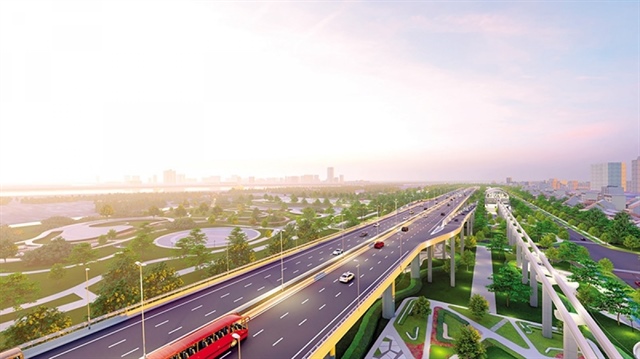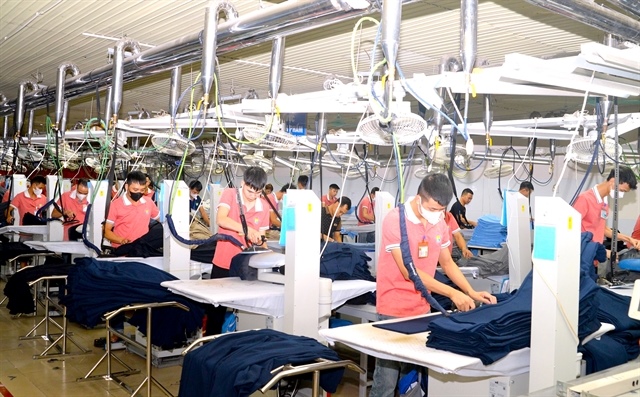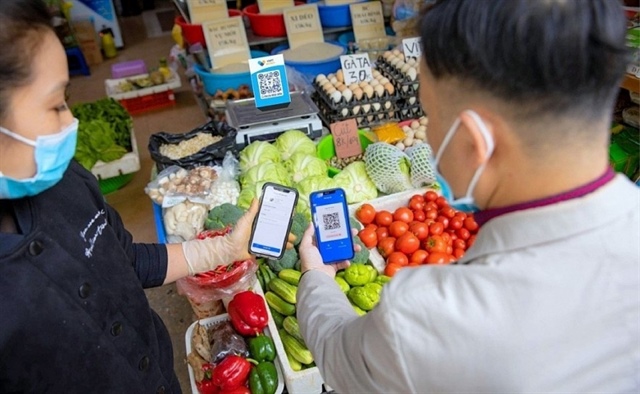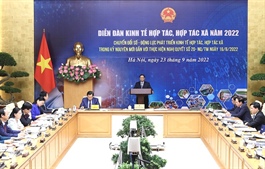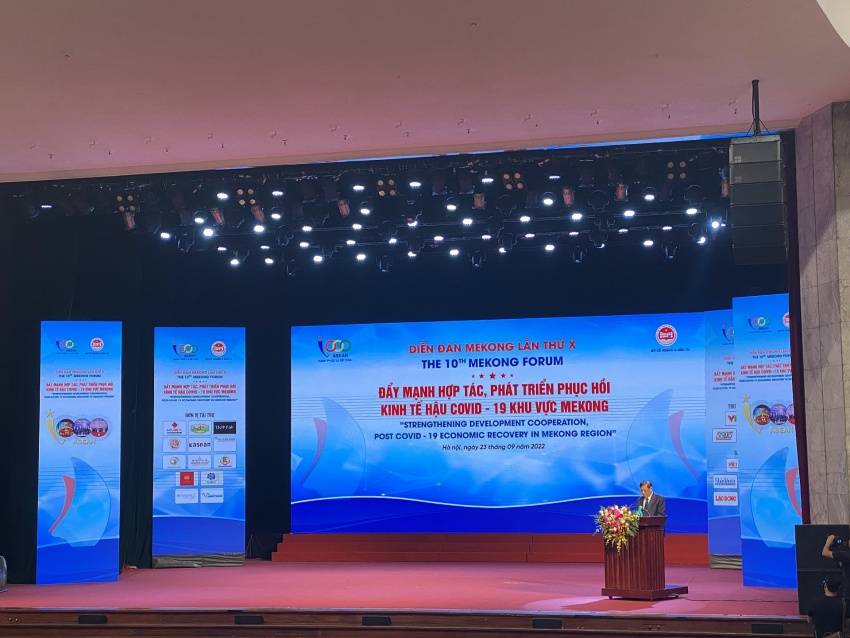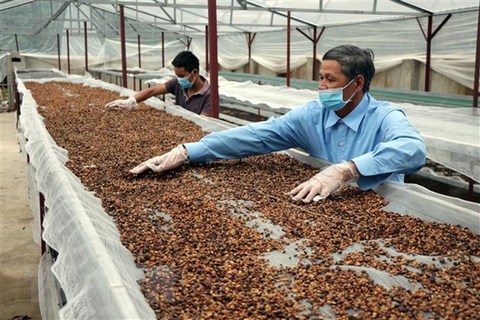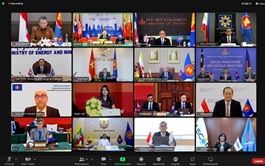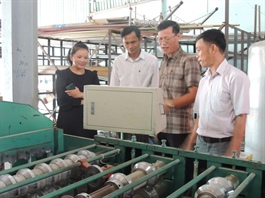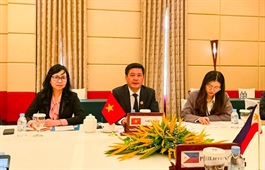Vietnam among fastest growing economies in East Asia – Pacific region: WB
Vietnam among fastest growing economies in East Asia – Pacific region: WB
The GDP growth would rebound to 7.2% in 2022 and moderate to 6.7% in 2023.
Vietnam’s economy is projected to rebound in 2022, growing by 7.2%, making it among the fastest growing in the East Asia-Pacific region, according to the World Bank.
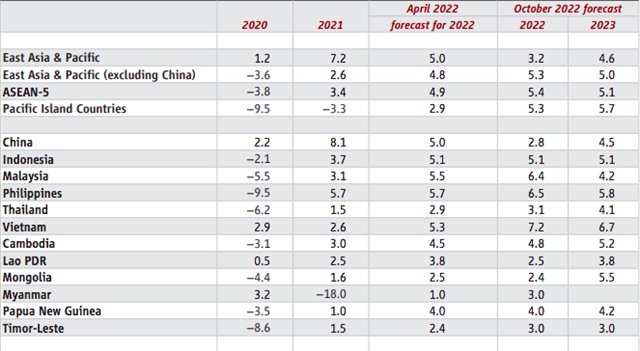
World Bank's GDP growth forecast. |
“The growth is driven in large by a strong recovery in domestic demand and continued solid performance by export-oriented manufacturing,” noted the World Bank in its latest East Asia and Pacific Economic Update today [September 27], titled “Reforms for Recovery”.
According to the report, such high growth is possible thanks to low-base effects after the lockdown-induced contraction last year, before reverting to trend growth over the medium term.
Inflation is projected to accelerate to 3.8% in 2022 and 4% in 2023 due to second-round effects of commodity price impacts, before subsiding to 3.3% in 2024, while public expenditures are expected to accelerate in the second half and the fiscal deficit will reach 2.8% of GDP in 2022, providing some support to the economy.
The deficit is projected to rise slightly to 3.2% of GDP as the implementation of the 2022-2023 support program picks up.
World Bank’s report added after a period of stagnation during the Covid-19 crisis, the pace of poverty reduction is expected to pick up, with the poverty rate declining from 3.7% in 2021 to 3.3% in 2022, based on the World Bank’s LMIC poverty line ($3.65/ day 2017PPP).
It, however, warned of heightened downside risks to the economy, including persistent global inflation pressures and a sharper than expected economic slowdown of Vietnam’s main trade partners (the US, eurozone, and China), and continued disruptions in the global value chains. “Internally, higher than expected inflation reported labor shortages in manufacturing areas, and heightened financial risks could affect growth prospects,” it said.
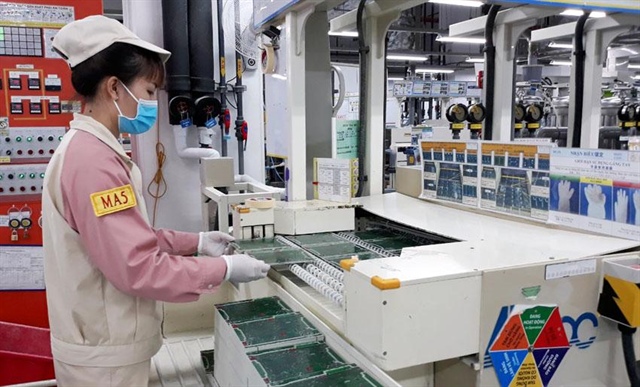
Electronics production at Meiko Vietnam in Thach That Industrial Park, Hanoi. Photo: Le Nam |
In the short term, given the economy is still recovering and inflation is in check, the current accommodative monetary stance remains appropriate while a more supportive fiscal stance would help to hedge against downside risks to growth, noted the World Bank.
This translates into better execution of the budget and the 2022-2023 support program. The ongoing fragility of household balance sheets, especially among the poor warrants continued social assistance.
However, if inflation accelerates above 4% and core inflation picks up, authorities should consider recalibrating monetary and fiscal policies.
In the medium to long term, achieving Vietnam’s goal to become an upper-middle income economy will depend on transitioning to productivity and innovation-led growth model based on more efficient use of productive, human, and natural capital. This transition requires strengthened institutional capacity to pass and implement structural reforms aimed at building a more competitive and resilient economy, stated the World Bank.
Economic recovery continues in the region
Looking to the region, the World Bank forecasts growth in developing East Asia and the Pacific outside China to accelerate to 5.3% in 2022 from 2.6% in 2021.
China, which previously led recovery in the region, is projected to grow by 2.8% in 2022, a sharp deceleration from 8.1% in 2021. For the region as a whole, growth is projected to slow to 3.2% this year from 7.2% in 2021, before accelerating to 4.6% next year, it added.
“Economic recovery is underway in most countries of East Asia and the Pacific,” said World Bank East Asia and Pacific Vice President Manuela V. Ferro. “As they prepare for slowing global growth, countries should address domestic policy distortions that impede longer-term development.”
Growth in much of East Asia and the Pacific has been driven by a recovery in domestic demand, enabled by a relaxation of Covid-related restrictions, and growth in exports. China, which constitutes around 86% of the region’s output, uses targeted public health measures to contain outbreaks of the virus, inhibiting economic activity.
The global economic slowdown is beginning to dampen demand for the region’s exports of commodities and manufactured goods.
As countries of the region seek to shield households and firms from higher food and energy prices, current policy measures provide much-needed relief, but add to existing policy distortions. Controls on food prices and energy subsidies benefit the wealthy and draw government spending away from infrastructure, health and education. Lingering regulatory forbearance, aimed to ease lending through the pandemic, can trap resources in failing firms and divert capital from the most dynamic sectors or businesses.
“Policymakers face a tough tradeoff between tackling inflation and supporting economic recovery,” said World Bank East Asia and Pacific Chief Economist Aaditya Mattoo. “Controls and subsidies muddy price signals and hurt productivity. Better policies for food, fuel, and finance would spur growth and insure against inflation.”


